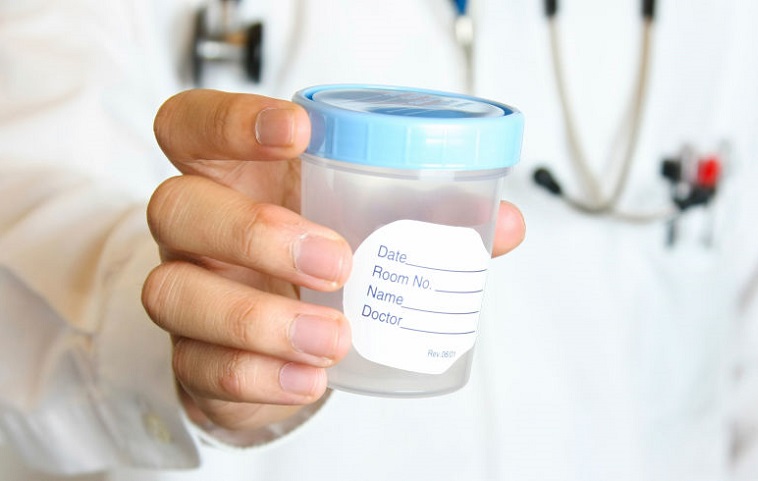What is Delayed Commitment in IVF?

How long will IVF treatment take?
3 October 2022
Considerations after Embryo Transfer
3 October 2022What is Delayed Commitment in IVF?

What is Delayed Commitment in IVF?
In IVF treatment, the reproductive cells are taken from the candidate mother and father and go through some processes. The highest quality sperm and eggs are then collected in the laboratory and fertilized. 1 or 2 of the highest quality embryos formed from these fertilized eggs are placed in the uterus of the expectant mother. After this procedure, they wait 12 days to find out if pregnancy has occurred, after this period, a blood test for pregnancy (beta hCG test) is performed. The reason this test is done 12 days after the embryo transfer is because the pregnancy hormone beta-hCG (human chorionic gonadotropin) can only enter the bloodstream during this process. In this regard, pregnancy tests carried out 12 days before, that is, earlier, will give a negative result, even if pregnancy has occurred.
Pregnancy with IVF is considered to have occurred a week after the stage of egg collection. Because the egg is fertilized by the sperm in the laboratory. In this case, if all the necessary conditions for embryo transfer are met and the embryo must attach to the mother’s uterus, pregnancy is considered to have occurred one week after the stage of egg collection. In IVF treatment, if the results of a pregnancy blood test performed 12 days after the embryo transfer show that the woman is pregnant, an ultrasound control should be performed two weeks later. In this ultrasound examination, when monitoring the fetal egg, the presence of pregnancy is finally determined. However, if the pregnancy test is positive in the blood, but the ovum is not visible on ultrasound, the question of an ectopic pregnancy may arise. In this case, urgent intervention and termination of pregnancy is performed.
What is delayed adhesion in IVF?
If ovulation in a woman who experiences normal menstrual bleeding every 28 days is delayed, the date of her period is also delayed. Because menstrual bleeding means that ovulation has occurred. Menstrual bleeding already occurs as a result of ovulation. In this regard, approximately 14 days after the onset of ovulation, a woman also begins menstruation. However, if a woman’s menstrual bleeding occurs later than expected, in society this is called late ovulation, that is, a delay in in vitro fertilization.
If delayed implantation occurs in IVF, is the week of gestation incorrectly estimated?
In the case of late ovulation, a woman will still not have her period that month. Therefore, it cannot be determined that ovulation is late in months with late ovulation. If a woman is menstruating, the week of pregnancy calculated from the first day of her period may differ from the week of pregnancy seen on the ultrasound. Thus, the error in determining the week of pregnancy is approximately 1 week. In this regard, the situation, popularly called late ovulation, is expressed as a late adherence to IVF.
What problems does delayed IVF adherence cause?
Delayed implantation during IVF does not cause any problems either for the health of the baby, or for the expectant mother, or for the course of pregnancy. If pregnancy occurs with delayed attachment, there is no risk of preterm labor, miscarriage, or abnormalities in the baby. What are the risks in other pregnancies, the risks in late insertion are the same and at the same rate. But it is correct that a specialist should calculate the week of pregnancy.
When does attachment to the uterine wall (implantation) occur after embryo transfer?
After IVF embryo transfer, attachment of the embryo to the uterine wall, especially on the 5th day (blastocyst), occurs within 2-5 days. Considering the day of egg retrieval and not the day of embryo transfer, the embryo attaches to the uterus within 6-10 days after the procedure. In other words, if the IVF treatment is successful, the embryo will be attached no later than 10 days after the eggs are retrieved. In a natural pregnancy, the embryo attaches to the uterus between the 20th and 24th days of the menstrual cycle, in which the expectant mother has her period every 28 days.
How long does it take for an embryo to attach?
While the fertilized egg is at the blastocyst stage, attachment occurs after the embryo separates from its outer shell. The embryo will enter and engraft in the lining of the uterus approximately 24 hours after the transfer.
How does Delayed Commitment to IVF treatment manifest itself, what does it change?
When a beta-hCG test, which is a blood test for pregnancy, gives a positive result, the pregnancy is considered to have occurred. The presence of a gestational sac on an ultrasound scan after that also proves pregnancy. The periods during which the level of the pregnancy hormone will rise in the blood and the ovum will be visible on ultrasound can also have slight differences in pregnant women. However, according to the uterine implantation window theory accepted by everyone in this regard, if the embryo cannot enter the uterus no later than 5-6 days after the egg has cracked, it will not be able to attach to the uterus. In other words, for pregnancy to occur, the egg must attach to the uterus within 5-6 days after the split.
With a natural pregnancy, this situation completely depends on the day the woman ovulates. Since the process of ovulation in a woman’s natural cycle depends on external factors, nutrition, mental state, hormonal factors and many other factors, ovulation and cracking of the egg can sometimes take longer than expected. Thus, the time for the pregnancy hormones to rise and the time for the pregnancy to be seen on an ultrasound may take longer than expected. However, in such cases, late ovulation is mentioned, not late clinging.
Will there be bleeding after embryo transfer?
Some women may experience vaginal bleeding after embryo transfer. One of the main causes of these bleedings; This is a trauma that occurs during the transfer of the embryo, that is, irritation that occurs when the catheter passes (especially with difficult transfers) through the cervix. Another factor that causes bleeding is a condition that occurs when a full-fledged embryo is attached and is called implantation bleeding in medicine. Both of these bleedings are short and in a small amount, in the form of smears and spotting. These bleeding do not adversely affect the course of pregnancy.
What should be considered in IVF transfer procedures?
When treating IVF, some issues need to be taken into account in order for pregnancy to occur after the transfer process. The details that are taken care of at this time help the pregnancy to take place and the baby to grow up healthy. In this process, it is very important for success to follow all the recommendations of the doctor performing the transfer. Issues to be considered as a whole;
• Bed rest must be observed for at least 1 hour after application.
• As part of the IVF application, it is important that the doctor’s advice on what the woman will change in the natural pace of her daily life and what this pace will be.
• A pregnancy blood test is performed 12 days after the embryo transfer. It is recommended to refrain from sexual intercourse before the test.
• After embryo transfer, drugs prescribed by a doctor must be used completely and under the supervision of a doctor.
• It is imperative to consult a specialist in any emergency situation that may arise in the period from the start of IVF treatment to childbirth.

